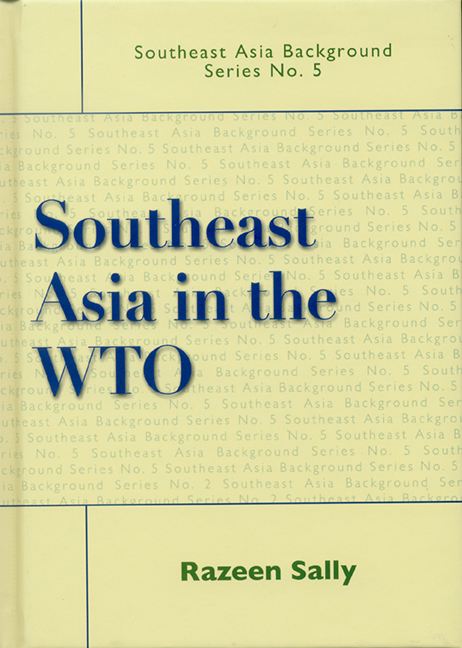6 - The Philippines and WTO
Published online by Cambridge University Press: 21 October 2015
Summary
TRADE POLICY FRAMEWORK
The Philippines is a late liberalizer by Southeast and East Asian standards. Protection persisted under the Marcos regime; and attempts at liberalization by the Aquino administration in the 1980s were half-hearted and piecemeal. Only with the Ramos administration (1992–98) was there catch-up trade and investment liberalization — at a frenetic pace. During this period, FDI and exports in manufacturing rose rapidly; exports of electronics, cars, and garments accounted for over 70 per cent of total exports by 1999. Perhaps most visible was a new liberal trade and FDI regime for electronics located in Special Economic Zones. Broadly speaking, the Ramos reforms remain in place, though the enthusiasm for further liberalization under the subsequent Estrada and Arroyo administrations seems to have waned.
On trade in goods, the Philippines has moved from high protection to a rather liberal regime in a remarkably short period. A four-year Tariff Reform Programme was established in 1991. Then followed landmark reforms: two Executive Orders issued by President Ramos in 1995 and 1996 that set in train radical tariff cutting through to 2004. MFN tariffs were to be harmonized down to a two-band structure (3–10 per cent) by 2003, with a uniform 5 per cent tariff put in place by 2004. Higher tariffs (up to 30 per cent) on some agricultural goods will continue after 2004. There has been slippage in reducing tariffs on some import-competing manufactures, especially on cars. A 30 per cent tariff was in place on finished car imports in order to promote local assembly production, but the government intends to bring this down to the uniform 5 per cent tariff by 2004.
Tariff reform continues, but with reversals en route. The average MFN tariff came down from 26 per cent in 1992 to 10 per cent in 1999, and is now just above 5 per cent (Table I). Ninety-six per cent of tariffs were already in the 0–5 per cent range by 2002. However, the government is slowing down the tariff reduction programme.
- Type
- Chapter
- Information
- Southeast Asia in the WTO , pp. 67 - 76Publisher: ISEAS–Yusof Ishak InstitutePrint publication year: 2004



